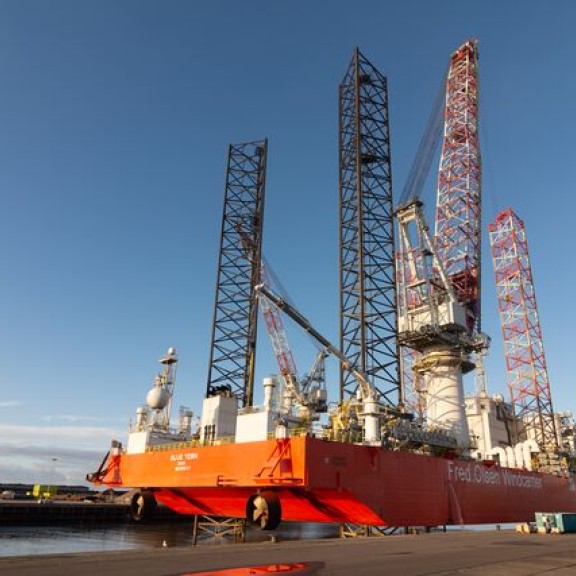
Energy Port 3.0
Interview published in Ways to Sea December edition
“Making the Netherlands climate neutral by 2050 is as promising a prospect as it is a necessity,” the words of the King in his speech to mark the opening of parliament. For Allard Klinkers, commercial manager Offshore & Logistics at Port of Amsterdam, that promising prospect extends to the energy transition. “We stand on the cusp of a major wind energy boom in the Netherlands.”
Port of Amsterdam is fully committed to invest in sustainable sources of energy over the coming years. “We have historically been an energy port, and we intend to remain an energy port. We are firmly committed to solar, wind, biofuels, and hydrogen as well,” explains Klinkers. “We are currently working with Nouryon and Tata Steel on research into a hundred-megawatt water-electrolysis system for hydrogen production. You cannot produce green hydrogen without green energy, and the only large-scale green energy currently available is offshore wind. Wind is, therefore, extremely important to the energy supply of the future.”
35 Hectares reserved
Since 2017 Port of Amsterdam has reserved 35 hectares for offshore green energy. Klinkers continues, “That’s a considerable plot, certainly when you consider how limited space in ports can be.” The 35 hectares are ready to be allocated. “Ideally, multiple players engaged in offshore wind energy will establish their business in the Amsterdam port area,” explains Klinkers. “The wind turbines have grown rapidly in the last few years, which means that the components in turn are larger. We are convinced that we could interest parties who are currently operating in land-based locations but may have a need for water-based operations in the future. Parties must evolve with the market after all, and think about what they are working towards. The port of Amsterdam, is strategically located right next to the offshore wind farms of the future. Furthermore there is the advantage that there is so much going on in the region in the offshore industry.”
The World’s Biggest Front Door
Using the umbrella name Amsterdam IJmuiden Offshore Ports (AYOP), Port of Amsterdam is combining forces with other ports in IJmuiden, Velsen, and Zaanstad. Klinkers continues, “The region is seeing a huge increase in the opportunities for offshore wind. When the new IJmuiden sea lock is completed in early 2022, we will have the world’s biggest front door, which allow us to work without having to be concerned with tides or weather.”
Earlier this year, Swedish power company Vattenfall decided to move its Operations and Maintenance hub for the Hollandse Kust Zuid wind farms to IJmuiden. “Work is also underway on developing a new installation port,” explains Klinkers. “The region is hopeful that those fifteen hectares will be available quickly. And then there is the production for the wind industry which we want to realize here in Amsterdam – that’s the aim.”
Hydrogen
In spite of its benefits, wind alone is not quite enough. “Some of the turbines in the German area of the North Sea are stationary, as the electricity grid has not yet been configured to accommodate them,” explains Klinkers. “Hydrogen can be used as a means to store renewable energy and has many potential applications in transport, mobility and industrial processes. Our collaboration with Nouryon and Tata Steel is one the biggest green hydrogen projects to involve a port that the world has seen so far, and I think that it demonstrates how eager and serious we are to get moving on the energy transition as soon as possible. Over the next ten years we will see in what direction we are heading and where the real opportunities lie.”
Green Energy Port
Klinkers also explains how the Port of Amsterdam is looking to capitalize on the opportunities of supporting other businesses in transitioning to more sustainable alternatives. “How can we, and our clients in the port, work through the transition in the best way possible? By 2030, the port will be coal free. That does not mean that we intend to distance ourselves from clients who do work with coal, but rather than we will work together to examine alternative cargo flows that fit better with the type of terminal that we have and our sustainability ambitions. Port of Amsterdam is moving from being an energy port to a green energy port.”